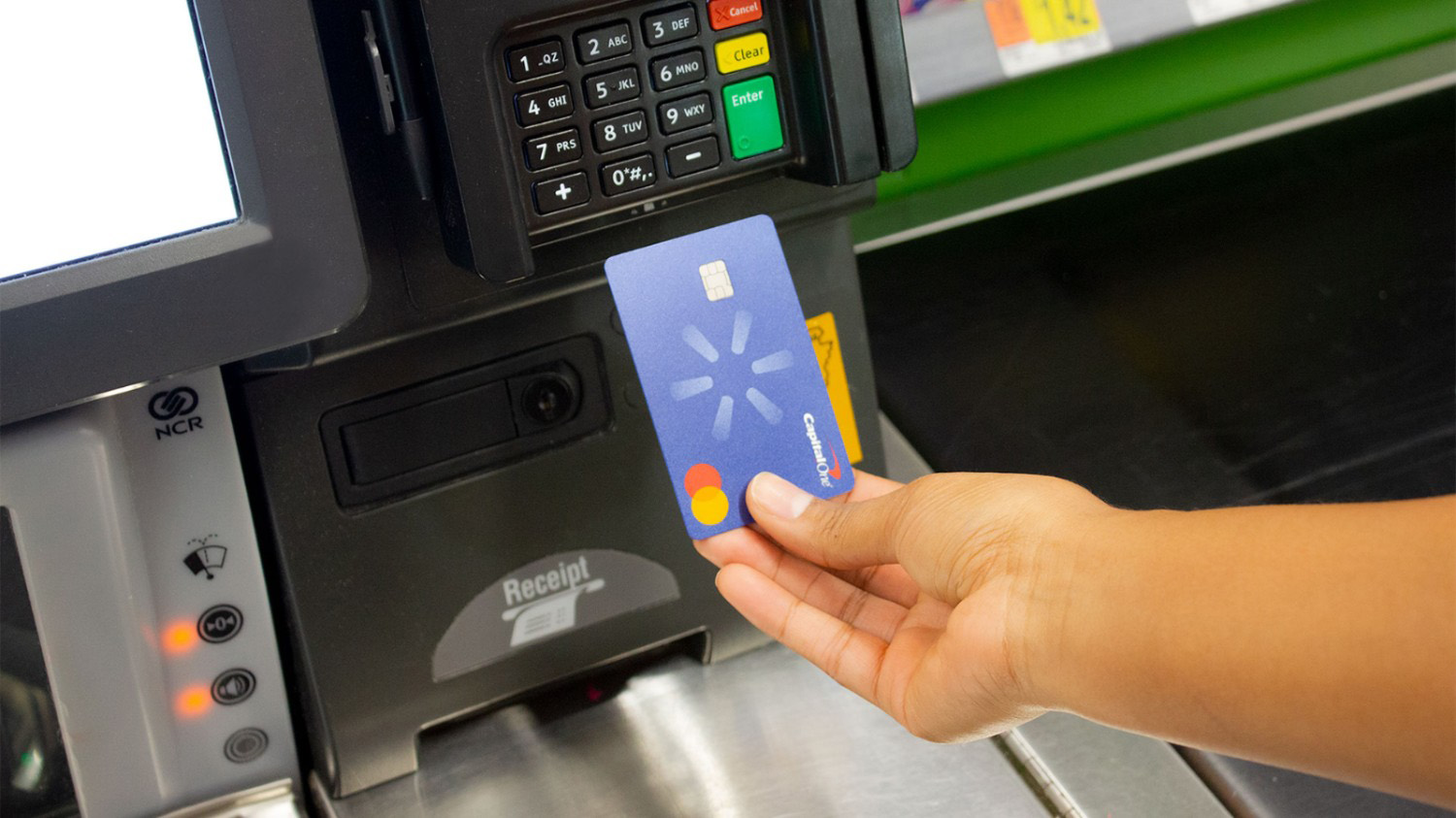

Finance
What Is The Minimum Payment For Home Depot
Published: February 25, 2024
Learn about the minimum payment for Home Depot and manage your finances wisely. Find out how to handle your expenses effectively.
(Many of the links in this article redirect to a specific reviewed product. Your purchase of these products through affiliate links helps to generate commission for LiveWell, at no extra cost. Learn more)
Table of Contents
- Understanding the Minimum Payment for Home Depot Credit Card
- Deciphering the Essentials of Minimum Payments
- Influential Elements Shaping Minimum Payment Requirements
- Navigating the Process of Determining Minimum Payments
- Strategic Benefits of Exceeding Minimum Payment Requirements
- Navigating Your Home Depot Credit Card Payments with Confidence
Introduction
Understanding the Minimum Payment for Home Depot Credit Card
When you make purchases using a Home Depot credit card, it's essential to understand the concept of the minimum payment. This requirement is a crucial aspect of managing your credit card account and ensuring financial responsibility. By comprehending the minimum payment and its implications, you can make informed decisions regarding your credit card usage and maintain a healthy financial standing.
The minimum payment represents the smallest amount you must pay each month to keep your Home Depot credit card account in good standing. Failing to meet this requirement can lead to late fees, increased interest charges, and potential damage to your credit score. Therefore, understanding the minimum payment is vital for responsible credit card management.
In the following sections, we will delve into the specifics of minimum payment requirements for Home Depot credit cards, explore the factors that influence these payments, and discuss the importance of making more than the minimum payment. Additionally, we will provide insights into calculating the minimum payment for Home Depot credit cards, empowering you to take control of your credit card finances and make informed decisions regarding your payments. Understanding these aspects will help you navigate your Home Depot credit card obligations effectively, ensuring a positive financial experience and minimizing any potential negative consequences.
Understanding Minimum Payment Requirements
Deciphering the Essentials of Minimum Payments
Comprehending the intricacies of minimum payment requirements is fundamental to managing your Home Depot credit card effectively. The minimum payment is the smallest amount you are obligated to pay each month to maintain your credit card account in good standing. It typically includes a portion of the principal balance, interest charges, and any applicable fees.
It’s important to note that while making the minimum payment by the due date prevents your account from being considered delinquent, it may not be sufficient to make significant progress in paying off your balance. By only paying the minimum, you may incur higher interest charges and prolong the time it takes to clear your debt.
Understanding the implications of the minimum payment is crucial for responsible credit card management. It allows you to make informed decisions about your finances, avoid unnecessary fees, and minimize the long-term cost of carrying a balance on your Home Depot credit card.
By familiarizing yourself with the minimum payment requirements and their impact, you can take proactive steps to effectively manage your credit card debt, ultimately contributing to a healthier financial outlook.
Factors Affecting Minimum Payment
Influential Elements Shaping Minimum Payment Requirements
Several factors influence the calculation of the minimum payment for your Home Depot credit card. Understanding these elements is essential for gaining insight into how your minimum payment is determined and how it can fluctuate over time.
- Outstanding Balance: The amount you owe on your Home Depot credit card significantly impacts your minimum payment. A higher outstanding balance generally results in a larger minimum payment requirement.
- Interest Rate: The annual percentage rate (APR) on your credit card directly affects the minimum payment. Higher interest rates lead to increased minimum payments, especially when coupled with a substantial balance.
- Fee Assessment: Any applicable fees, such as late payment fees or over-limit fees, can contribute to a higher minimum payment. It’s crucial to understand the potential impact of fees on your overall payment obligation.
- Payment History: Your payment behavior and history can influence the minimum payment. Consistently late or missed payments may result in a higher minimum payment requirement as the credit card issuer seeks to mitigate the perceived risk.
- Credit Utilization: The proportion of your available credit that you are currently using, known as credit utilization, can impact the minimum payment. Higher credit utilization ratios may lead to increased minimum payments.
By considering these factors, you can gain a comprehensive understanding of how the minimum payment for your Home Depot credit card is calculated. This knowledge empowers you to make informed financial decisions and take proactive steps to manage your credit card obligations effectively.
How to Calculate Minimum Payment for Home Depot
Navigating the Process of Determining Minimum Payments
Calculating the minimum payment for your Home Depot credit card involves considering several key factors. While the specific formula used by credit card issuers may vary, understanding the general principles can provide valuable insights into how your minimum payment is determined.
Typically, the minimum payment is calculated as a percentage of your outstanding balance, subject to a minimum dollar amount. For example, it may be the greater of a specific percentage of the balance or a predetermined minimum, such as $25. Additionally, any interest charges and applicable fees are included in the minimum payment calculation.
Here is a simplified example of how the minimum payment might be calculated:
- Outstanding Balance: $1,000
- Minimum Payment Percentage: 3% of the outstanding balance
- Minimum Payment Floor: $25
- Interest Charges: $15
- Fees: $0
Using the above information, the minimum payment would be calculated as follows:
Minimum Payment = Maximum(3% * $1,000, $25) + $15 = Maximum($30, $25) + $15 = $30 + $15 = $45
By understanding the components involved in calculating the minimum payment, you can gain clarity on the factors contributing to your payment obligation. This knowledge empowers you to anticipate your minimum payment amount and make informed decisions regarding your credit card finances.
Importance of Making More than the Minimum Payment
Strategic Benefits of Exceeding Minimum Payment Requirements
While meeting the minimum payment for your Home Depot credit card is essential to avoid late fees and maintain a positive account status, making more than the minimum payment offers numerous strategic advantages. By exceeding the minimum payment requirement, you can accelerate debt repayment, reduce interest charges, and enhance your overall financial well-being.
One significant benefit of paying more than the minimum is the potential to save on interest costs. By reducing the outstanding balance more quickly, you decrease the amount of time interest accrues on the remaining debt. This can lead to substantial long-term savings and expedite your journey toward financial freedom.
Additionally, making larger payments enables you to pay off your Home Depot credit card balance faster, freeing up financial resources for other priorities. This proactive approach to debt repayment fosters a sense of financial empowerment and reduces the burden of carrying a long-term credit card balance.
Furthermore, consistently making more than the minimum payment can positively impact your credit score. Responsible credit utilization and timely payments are key factors in credit scoring models, and demonstrating a commitment to reducing your credit card debt reflects favorably on your creditworthiness.
By making larger payments, you can also cultivate disciplined financial habits and gain a sense of accomplishment as you steadily reduce your credit card balance. This proactive approach to debt management fosters a positive mindset and sets the stage for long-term financial success.
In summary, while meeting the minimum payment is crucial, striving to exceed this requirement can yield substantial benefits. By embracing the practice of making more than the minimum payment, you can expedite debt repayment, reduce interest costs, bolster your credit profile, and foster a proactive and empowered approach to managing your Home Depot credit card account.
Conclusion
Navigating Your Home Depot Credit Card Payments with Confidence
Understanding the minimum payment requirements for your Home Depot credit card is a foundational aspect of responsible financial management. By grasping the intricacies of minimum payments, factors influencing their calculation, and the strategic benefits of exceeding the minimum requirement, you can take proactive steps to navigate your credit card obligations with confidence and foresight.
It is essential to recognize that while meeting the minimum payment is crucial for avoiding late fees and maintaining a positive account status, striving to make more than the minimum payment offers a wealth of advantages. From reducing interest costs and accelerating debt repayment to cultivating disciplined financial habits and bolstering your credit profile, exceeding the minimum payment requirement can significantly impact your financial well-being.
By familiarizing yourself with the nuances of minimum payments and embracing the practice of making more than the minimum, you can position yourself for long-term financial success. This proactive approach empowers you to take control of your credit card debt, minimize interest charges, and cultivate a positive financial outlook.
Ultimately, by leveraging your understanding of minimum payment requirements and adopting a proactive mindset toward debt repayment, you can optimize your financial journey and pave the way for a secure and empowered financial future.














